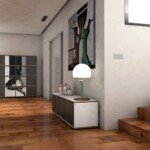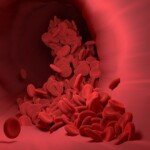Mastering Accuracy: A Comprehensive Guide to CNC Sheet Metal Manufacturing
In today’s demanding manufacturing landscape, the accuracy, repeatability and efficiency of non-metallic parts production are not negotiable. CNC (Computer Numerical Control) Sheet Metal Manufacturing is at the forefront of modern manufacturing, converting flat plates of metal into complex functional components used in countless industries – from aerospace and automotive to electronics and medical devices. This guide delves into the process, advantages and considerations of CNC sheet metal manufacturing, clarifying why it is the cornerstone of industrial production.
Understand the core: What is CNC sheet metal manufacturing?
In essence, CNC sheet metal manufacturing involves the use of computer-programmed mechanical control of sheet metal manipulation. Digital designs (usually CAD files) are converted to machine instructions (G codes), instructing the device to cut, bend, punch, form and connect metal plates with excellent accuracy and minimal human intervention. This automation can unlock impossible consistency and complexity through a purely manual approach.
Raw materials: Start with sheet metal
The journey begins with choosing the right materials. Co-choices include:
- Carbon steel: Economical, multifunctional, solderable.
- Stainless steel: Excellent corrosion resistance, strength and hygiene (e.g., 304, 316).
- aluminum: Lightweight, good corrosion resistance, excellent strength to weight ratio (e.g., 5052, 6061).
- Copper and Brass: Excellent conductivity and aesthetic appeal.
- Exotic alloys: Titanium, inconel, etc. are used for specialized high pressure or high temperature applications.
Material selection affects almost every subsequent step, including tool selection, cutting parameters, bending radius, and finishing options. Thickness (gauge) is another key factor that affects the strength of the part and the applicable manufacturing method.
Key CNC process in sheet metal manufacturing:
-
CNC cutting: separate shapes
- Laser cutting: A highly accurate, versatile method of using a focused laser beam to melt or evaporate materials. Ideal for complex profiles, tight tolerances (±0.1mm or higher) and various thicknesses. The smallest heat-affected zone reduces warping.
- CNC punching: Quickly punch holes, slots, blinds and other features with a turret press with a range of tools. High efficiency for high volume operation with standard geometry. Combined with the formation tool, it creates simple bending and embossing.
- Plasma Cutting: Best for thicker materials. Use a plasma torch (ionic gas) to cut the metal. Lasers on thick materials are faster than lasers, but usually have a wider kerf (cut width) and a rougher edge finish. The tolerance is not very accurate (±0.5mm or more).
- Cutting clip: High-pressure water is mixed with frosted sand to erode the material. There is almost no material that heats away from heat distortion and hardening, but is slower than standard metal lasers and possibly slower than lasers.
-
CNC Formation: Shaping Apartments
- CNC Media Braking: The main force of sheet metal bending. CNC controlled pressure braking uses precise ground punching and bends the cut blank to the desired angle with high accuracy (±0.25° or higher). Modern brakes feature complex back mountain and crown systems that are placed accurately bent and consistently consistent across paper length. Factors such as bending radius, minimum flange length and rebound (the tendency of material to regress slightly after bending) are key design considerations (K factor, bending deduction/subsidy).
- CNC scrolling formation: Used to create long parts with a consistent cross-section (e.g. brackets, channels) by gradually transferring sheet metal through a contour roller.
-
Secondary Action and Joining: Construction Conference
- CNC drilling and eavesdropping: Create holes and lines precisely for fasteners.
- CNC milling (exclusive to advanced context): Although not traditional sheet Working, complex manufacturing components often require milling features on bent or assembled parts for critical interfaces.
- welding: MIG, TIG and SPOT welding are common for components composed of permanent connections.
- Riveting and fixing: Mechanical fixation selection.
- assembly: Integrate the manufactured parts with other components.
- Grooming: Aesthetics and Performance
- Deburring: Remove sharp edges from cutting and punching.
- Surface finish: Painting, powder coating, anodized (aluminum), plating, passivation (stainless steel), to corrosion resistance, appearance or specific functional properties.
- Silk Screening/Laser Etching: Add a tag, logo or description.
Advantages of five-axis CNC in complex manufacturing
While many sheet metal manufacturing processes mainly utilize 2D or 3D CNC controls, they are integrated Five-axis CNC machining functionespecially for complex components or post-processing, can significantly increase the possibility. The company likes it Great Provide unparalleled solutions with advanced five-axis CNC machining centers along with CNC manufacturing lines:
- Complex part integration: Making the key features directly onto preformed sheet metal components, while standard methods would be impossible or expensive.
- Eliminate secondary operations: The change and processing of the fixture is reduced by machining multiple faces/angles directly in a single setup on the manufacturing.
- Super proprietary features: On high-performance components (e.g., aerospace bays, complex housings), tight tolerances (±0.05mm or higher) can be achieved on holes, pockets, threads and 3D profiles.
- Solve manufacturing problems: Deformation or distortion challenges after formation are solved by machining the surface flat or realistically.
- Prototypes and small volume production: Quickly create complex functional parts without the need for dedicated tools for forming or punching holes.
Why choose a professional CNC metal service (such as Greatlime)?
- Speed and efficiency: Rapid prototypes target mass production operations. CNC automation ensures fast turnaround.
- Unparalleled accuracy and consistency: Computer control ensures that each section is the same as the digital model and is processed after batch.
- Design flexibility: Ability to make complex geometric shapes impractical or impossible to manually or with simpler CNC machines.
- Cost-effective (especially quantity > 10): Reduce labor, minimize material waste (nesting optimization) and eliminate prototype/low volume tool costs.
- Scalability: A seamless transition from prototyping to complete production.
- Materials and completion expertise: Guide to the best materials and finishes for applications and support from extensive processing knowledge.
in conclusion
CNC sheet metal manufacturing is the backbone of precision metal parts manufacturing. By leveraging computer-controlled processes such as laser cutting, punching and pressure braking, it can provide accuracy, efficiency and versatility through traditional methods. For components that require the highest level of complexity or accuracy – complex 3D functions, ultra-tight tolerances or seamless integration of formation and machining is crucial – working with owned manufacturers Like Greatlime, advanced five-axis CNC capabilities become crucial.
Great Not only is it a mechanical workshop; we are problem solvers in the manufacturing of complex metal parts. With our state-of-the-art five-axis CNC machining center, extensive metal manufacturing expertise, and a full range of finishing services, we provide a truly one-stop solution. We quickly customize parts in most materials, offering excellent quality and competitive prices. When your project requires more than just standard manufacturing, trust Greatlame to deliver precise design results.
Get started with custom precision metal parts now!
FAQ: CNC sheet metal manufacturing
Q1: What are the main advantages of other methods of CNC laser cutting?
A: CNC laser cutting has excellent accuracy (±0.1mm), the ability to cut with minimal KERF width, fast cutting speed (especially thinner materials), high-quality edge quality with minimal compared to plasma. It is highly used in a wide range of materials and thicknesses (although the effectiveness reduces the functionality of very thick metals with plasma or water clamps).
Q2: What is rebound in bending and how to manage it?
Answer: The bending of the spring back is an inherent tendency for the spring to pop out slightly after the metal is bent. This means that the bending angle achieved will be less than the angle formed by the pressure brake tool. When calculating the required bending angle and force, skilled programmers center the spring-return characteristics of a specific material (using factors such as K-factors). Modern CNC news brakes can also be used for automation "Angle correction" Features are performed by measuring the actual angle after bending and real-time adjustment.
Question 3: Can CNC metal manufacturing handle low-capacity production or prototype production?
Answer: Absolutely! In fact, CNC manufacturing is good at small volumes and prototypes. While drilling requires tools (standard or custom), laser cutting and CNC braking do not require dedicated hard tools for part geometry. This makes it very cost-effective and fast initial runs and prototypes compared to stamps that require expensive molds. Nested software optimizes material usage even in small batches.
Q4: Which file format do I need for CNC sheet metal manufacturing?
A: Standard format is crucial. DWG and DXF (2D AutoCAD format) is the most common, and the preferred plan pattern shows the cutting profile, holes and curved lines. step or Igs For 3D models, especially when it involves bending or complex components, or for five-axis machining. PDFs can sometimes be used for basic quotes, but lack the precision of production. Always clarify your manufacturer’s requirements.
Q5: What common design errors are avoided in sheet metal manufacturing?
Answer: Key errors include:
- Ignore the bending radius: Specifying a bending radius less than the material minimum will result in rupture.
- The flange is too short: The material thickness of the flange is less than 4 times the length of the material plus the bending radius, which is impossible to form correctly on the pressure brake.
- Insufficient gaps around functions: Bevels that are too close to the features (holes, slots, edges) may cause distortion or tool interference. Keep clearance is defined as a multiple of material thickness (e.g., hole diameter + curve line + 1.5T).
- Forgot the direction of the grain: Especially important for bending. Bending perpendicular to the grain direction can cause cracking of certain materials. Design parts that are directed by particles.
- Strict tolerances for non-critical features: Only when functions are required, tight tolerances (±0.1mm, ±0.05mm); loose tolerances elsewhere will greatly reduce costs.
Question 6: What makes five-axis CNC machining beneficial for fabricated sheet metal parts?
A: Five-axis CNC machining adds key functions beyond standard manufacturing:
- Complex processing of bending: In one setup, holes, pockets, threads or surfaces are processed in a single setup without multiple fixtures/Raymond.
- Improve flatness: When welding or distortion occurs, the processing and installation surface is flat.
- Create complex 3D functions: Add a contour, channel, or contour to or below the curved portion that cannot be formed.
- Prototype complex components: Create a whole part, otherwise it will require welding several formed parts, which are usually faster and possibly more powerful.
- Achieving ultra-high accuracy: Meeting critical tolerances for machining benchmarks that interface with other components. (GRESTLIGHT specializes in this integration).
Question 7: How quickly can I expect parts for CNC sheet metal service?
A: Delivery times vary greatly depending on design complexity, material availability, quantity, finishing requirements and current store workload. The prototype can usually be sky. Standard production operation may require 1-3 weeks. Large capacity orders or orders that require custom tools or complex five-axis machining will take longer. Always discuss schedules with the manufacturer of your choice Great For specific quotes. Fast turnover is the key strength of CNC manufacturing.
Question 8: Will Greatlight handle the finish of CNC-made parts?
Answer: Yes! Great Provide comprehensive One-stop post-processing and completion service. This includes burrs, various cleaning processes, powder coating, paint, anodization (for aluminum), electroplating, passivation (for stainless steel), silk screening and laser marking. We manage the entire process from raw materials to finished products, to be installed.

















